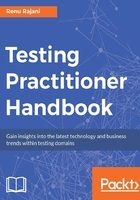
Conclusion
Factory model prevalent in the manufacturing world is being increasingly applied in services, specifically in software testing to bring in operating efficiencies to carry out standardized work packets in a standardized work flow. The efficiencies in DQAF model described in this chapter are achieved through implementation of various levers, such as people skills and competencies, repeatable and consistent processes, preconfigured tools, accelerators, and maturing delivery models.
We discussed the need for maturity assessment and qualification criteria for onboarding the engagements to DQAF. The key enablers for DQAF include service catalog, domain capability, resourcing model and governance with defined SLAs/KPIs, tools and accelerators, and a pay-per-use Testing as a Service (TaaS) model.
We discussed delivery of Digital QA engagements through the DQAF's service delivery function.
Factory model has become popular given the benefits it offers with economies of scale of pooling the engagements. We concluded this chapter with indicative benefits achieved through the use of the model.